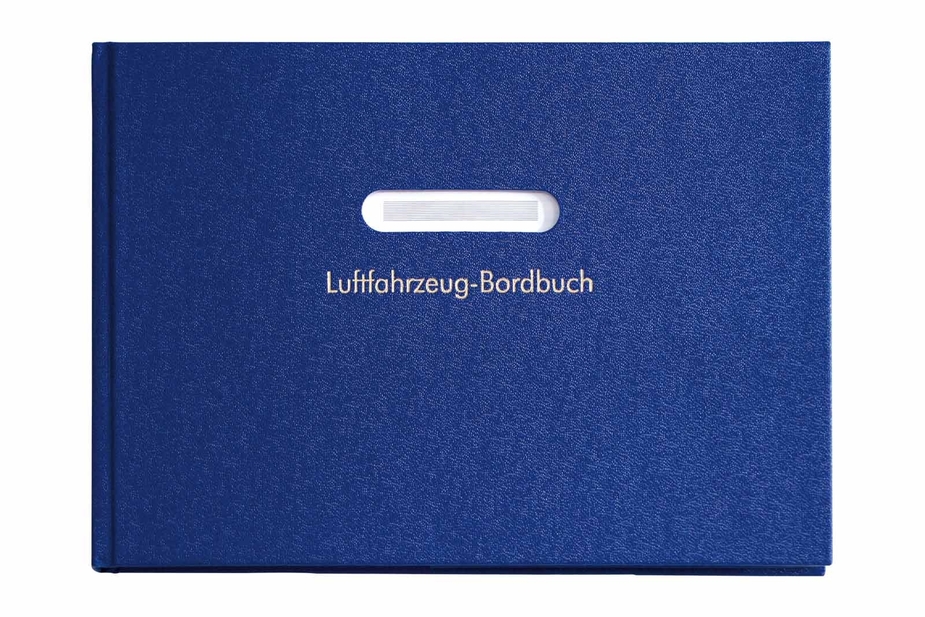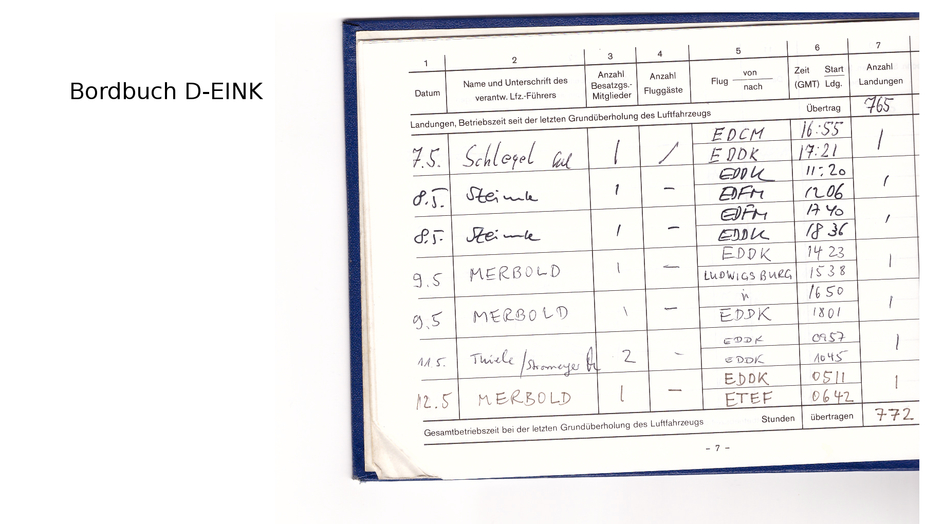Again (and again ) ICAO only recommends national laws to that effect for aircraft making international flights.
If I remember correctly it is in an article of the Chicago convention, so not a recommendation, but a requirement that all signatory states have agreed to. And signatory states (as well as EASA) have implemented it in their air law.
As far as I am concerned a N-reg flying in Europe is performing international flights., but the journey log is required by the European authorities for all aircraft landing or departing at an airfield in EASA, regardless of registration, and they can according the the Chicago convention.
But you are right that it has been discussed profusely here and I am not sure there is much to add to that debate.
I have personally not been ramp checked in an N-reg in Europe, but I have heard of others that have been and were asked to produce the journey log, including for the DA40 I used to rent.
If you sell an aircraft, a complete journey log adds value because it allows to establish the history of the aircraft in a much more complete and credible fashion.
I must be misunderstanding. I’d thought a journey log was a log of recent land and take-offs, i.e. since leaving base.
If it’s for the life of the aircraft, there are problems for older aircraft.
Our Group have records for our Jodel’s flights only since December 1999, when we bought her, although we have complete airframe log books, and an engine log since it was fitted.
I cannot believe that for the purposes of the EASA journey log mandate the log needs to go all the way back to the new aircraft, and indeed that would be impractical in most cases.
The exception to the above is if you are taking advantage of the UK VAT amnesty on undeclared-for-VAT imported aircraft (some previous threads here) in which case you need a pretty complete log, covering some specific long time period many years ago.
Sure a journey log potentially adds value, but it is not exactly hard to write one up. Especially these days with many people keeping computer records and logbooks etc. A lot of the stuff that goes on with aircraft for sale is mind boggling; you need to only read some awful stories posted here by the buyers.
As to the purpose of the log, and thus an attempt to answer the Q of how far back it needs to go, this has been asked here before and I don’t think anybody has any idea. My feeling is that – assuming anybody has actually got a “plan” which is by no means assured – the objective is to help to incriminate the pilot or operator who has been doing something dodgy e.g. carrying paying passengers or doing cabotage. Everybody knows that dodgy flights won’t be logged but that will also incriminate the pilot very nicely because the journey log won’t match airport or Eurocontrol (or FR24  ) records. So it is basically a push to force the pilot to self-certify the flights which have been logged elsewhere in the system, and that always makes a prosecution easier.
) records. So it is basically a push to force the pilot to self-certify the flights which have been logged elsewhere in the system, and that always makes a prosecution easier.
The confusion is due to the very different implementations of these ICAO rules that the various European countries had in the times pre-dating Part-OPS.
In Germany, we have always had something called the “Bordbuch”. This Bordbuch gets one entry for each flight, including place of departure, place of landing, airborne and landing times, etc. This is what it looks like from the outside:

And this is what it looks like inside:

The book is almost about half an inch thick, so, depending of course on how much the aircraft lfies, it usually holds all the flights dating back at least one year; sometimes more like 2 or 4 years. In other words: the Germans have always had something which fulfils all the requirements of the EASA journey log. That’s why the Germans are so totally relaxed about that “new” EASA requirement.
The UK on the other hand doesn’t seem to have historically had something just like that. You have technical “logbooks” (which Germany does not have), but they are not equivalent to the EASA journey log (for example they were not usually on board the aircraft). That’s why UK pilots often seem to think of the journey log as something that starts to exist at the beginning of a “journey” (whatever that is) and is thrown away at the end of that journey. I am pretty sure this wasn’t the intention of EASA (if there ever was an “intention” to go along with this). UK owners will simply have to get into the habit of having such “book” with the aircraft and making an entry after every flight. Otherwise, they risk getting into trouble whren visiting vountries such as Germany. Do any British pilot shops sell any such journey logbooks as of yet?
As far as I know, there is only some very vague guidance from EASA in terms of of how far they think the journey log in the aircraft should date back to. Anyway, as I said, the Germans will just continue with their “Bordbuch” as they did for decades.
I wouldn’t say a Bordbuch does really add to the value of a D-registered aircraft. It can’t really exist without one, so if it were missing, it would seriously reduce the aircraft resale value. Even if we are talking an N-reg operated and sold in Germany (for which, until very recently, a journey log was not mandatory), I’d say that a non-existant journey log would reduce its value to some degree, since, at least a German buyer – even if he knows that it hasn’t been mandatory until recently – would find it odd not to get to see one during the pre-buy.
Anyway, Part-NCO allows the journey log to be 100% digital. PuF for example has gone this road with their aircraft.
Just one small point: AFAIK the “UK tech log” is just a flying school thing. It is used to record the flights and the fuel on board at the start and end of each flight.
Yes you can laugh about the idea of recording fuel status, on planes where nobody really knows the fuel burn and those that might be interested are normally instructed to not mess with the red lever otherwise the engine will melt – google G-OMAR for a nice case study 
As regards suitable logbooks, the only one I ever found which was reasonably compact was the American ASA-SP-FLT-2 which I got from the USA (following an abortive attempt to get it from a French pilot shop which stocked it) and which features here.
boscomantico wrote:
I wouldn’t say a Bordbuch does really add to the value of a D-registered aircraft. It can’t really exist without one, so if it were missing, it would seriously reduce the aircraft resale value. Even if we are talking an N-reg operated and sold in Germany (for which, until very recently, a journey log was not mandatory), I’d say that a non-existant journey log would reduce its value to some degree, since, at least a German buyer – even if he knows that it hasn’t been mandatory until recently – would find it odd not to get to see one during the pre-buy.
I have a Bordbuch like that for one of my aircraft… the entries end in 1971. To me and anybody who would buy my N-registered plane, its an interesting historical artifact. Obviously German historical practice involves huge amounts of tedious record keeping and the UK is only mildly less inclined to that sort of thing, but in the here and now its amazing to me that EASA got away with so vastly gold plating the ICAO requirement that applies to international flights… You’d think they would have gone in the opposite direction, eliminating funny misapplied national stuff! Certainly having to record details of every every flight individually would substantially demotivate me from owning a modern (1950s or newer) aircraft – it’s just silly.
@Peter when long ago I wrapped up my Private Certificate by taking a few hours at a flight school (who then hooked me up with the DPE) I was instructed to stick the tanks before every flight. Depending on type, effects of dihedral etc, I still do it now. With that done by the pilot immediately prior to every flight, there’s no point in writing it down for others.
The EU reg does not say what flight time must be entered in the Journey log. Bloc time? Airborne time?
French reg makes it mandatory to keep a journey log with Bloc time.
What about your local reg?
I have no idea about the regs but in the ASA logbook I enter the brakes off time, the brakes on time, and the airborne time, so if anybody wants it, they can get the whole lot.
Silvaire wrote:
I have a Bordbuch like that for one of my aircraft… the entries end in 1971. To me and anybody who would buy my N-registered plane, its an interesting historical artifact.
Exactly, one of the many values. As you can see from boscomantico’s logbook copies, his aircraft was flown by Ulf Merbold, the first West German that has travelled to space. This Turbo Arrow used to be owned by DLR (the German NASA) for astronaut training.
I think it’s really neat to have all those logbooks. Mine go back to 1979 when the airplane was built and there is every flight in there with names of pilots, airport codes, times. A bit tedious to maintain but I don’t have to take anybody’s word that the airplane was never stationed in a corrosive environment or that it was never used for flight training.